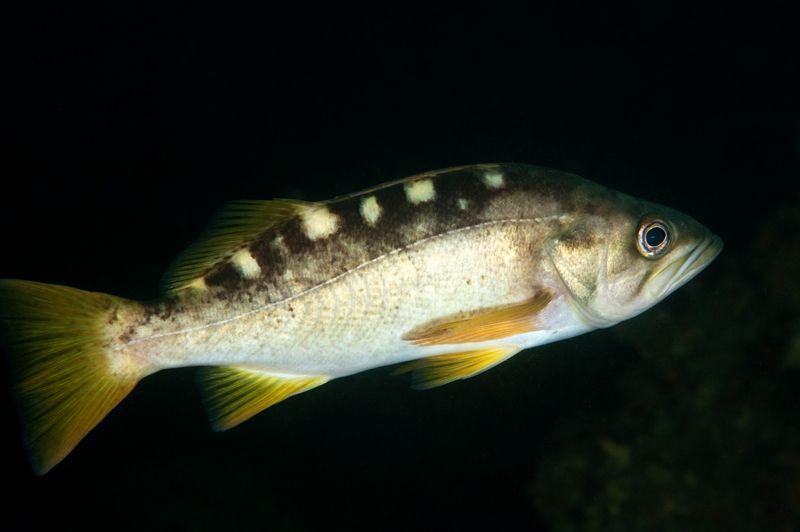My EQ is what is the best way to raise oceanic fish in captivity? My best answer would be my third answer, which is an Aquarist must provide the correct diet for the needs of each fish throughout its stages of life. This is my best answer for many reasons. In my interviews with Nicole she was talking about diet a lot. She said that diet could really affect larval fish, especially in their development. She also explained to me the 'scale system'. This is pretty much the stages throughout a fishes life of what food they get. It goes in order from smallest to biggest food size: Rotifers, Artemis, Cyclopeez, Mysid Shrimp, Clam, fish, squid, etc.
(2) What process did you take to arrive at this answer?
A huge part of this process was from a research project I'm doing at the Aquarium. I am working with nine Sebastes serranoides, Olive Rockfish, to see how macronutrients such as fat, protein, carbohydrates and calories affect their growth in both length and girth. I was originally going to see how it affected their behavior and activeness but due to technical difficulties with the lab video camera I was unable to continue this part. The way this project works, my fish are fed twice a week (Sunday and Wednesday) and data is collected every two weeks on Sunday. Each fish is fed either 1 gram smelt, squid or 0.5 grams squid and 0.5 grams squid. To collect data I remove the pipe and planet that is their habitat and replace it with a 8x6'' grid that is held to the bottom by a jar. I will then feed each fish its assigned food using a feeding stick, careful not to let any not eaten material float between barriers. After feeding I will drain the water until the fish are 'forced' to sit flat on the bottom of the tank. Then I take photos of the whole fish with the grid. Next I will upload the pictures onto a computer program called ImageJ to calculate the length and girth. I have already completed my first trial and am currently in a second trial. I found that my hypothesis was correct, the fish fed only smelt grew the largest, the fish fed the mix of smelt and squid came in second and the fish fed only squid came in last. This project got me intersted in researching about diet. Another thing that made me realise how important diet was, was from an article I was reading called Commercial products for Artemia enrichment affect growth performance, digestive system maturation, ossification and incidence of skeletal deformities in Senegalese sole (Solea senegalensis) larvae. It was talking about how Sole larvae were experimented eating either enriched or unenriched brine shrimp, and the results found that the fish fed unenriched brine shrimp had skeletal deformities and malpigmintation in much higher numbers.
(3) What problems did you face? How did you resolve them?
As far as research went, I was having trouble getting my stuby little hands on the artciles because most of the sites wanted me to pay for them. Of course I did not want to. So luckily for me, my first mentor Andres Carillo was very generous and said that I could email him the links to the article and he would see if he could get it for me, since he was a current student at UCI. I also went to the Cal Poly Library Database. That was honestly my hardest problem for this answer.
(4) What are the two most significant sources you used to answer your essential question and why?
My first and best source would be from my interviews/mentorship. I've learned so much from both and they have really helped me grasp topics that had once been really complicated for me like larval rearing. Just reading from articles and books did not give me a full understanding, I needed to experience it for myself. I learned how to prep food, how to find out how much to feed to each fish, and other skills. As for a printed source, I would have to say 'Commercial products for Artemia enrichment affect growth performance, digestive system maturation, ossification and incidence of skeletal deformities in Senegalese sole (Solea senegalensis) larvae.' This one really gave me a good foothold to begin searching deeper into this topic.
